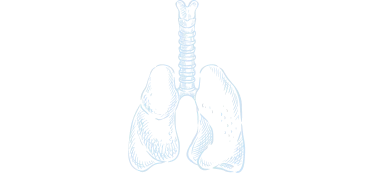MIGHTY BREATH ONLINE COURSE
Slow your breath.
Quiet your mind.
Discover a simple breathwork practice designed to calm your nervous system and support your champion mindset.


MIGHTY BREATH ONLINE COURSE
Slow your breath.
Quiet your mind.
Discover a simple breathwork practice designed to calm your nervous system and support your champion mindset.

Expand your breath capacity

Clean and detox your lungs

Decrease anxiety and stress

Expand your breath capacity

Clean and detox your lungs

Decrease anxiety and stress

Come back to calm.
On average, people take 15-25 breaths per minute and have access to about 5-7 cubic liters of air. There's nothing "wrong" with that pace; it keeps us alive, after all.
But if you want to go from alive to truly living, slowing your breath is key.
Double your capacity.
With Mighty Breath, you can double or even triple your lung capacity. But this work goes well beyond the breath.
Because our typical breath rate locks the fascia and nervous system in a state of tension, we don't have access to brain wave frequencies associated with intuition, insight, and expanded consciousness.
That means as you slow your breath and grow your lung capacity, you also expand your tolerance for discomfort and amplify your awareness. And that's how champions are made.


Double your capacity.
With Dynamic Breathwork, you can double or even triple your lung capacity. But this work goes well beyond the breath.
Because our typical breath rate locks the fascia and nervous system in a state of tension, we don't have access to brain wave frequencies associated with intuition, insight, and expanded consciousness.
That means as you slow your breath and grow your lung capacity, you also expand your tolerance for discomfort and amplify your awareness. And that's how champions are made.
Learn to breathe free and easy.
With Dynamic Breathwork, you can slow your breath pattern, decrease your heart rate, and access a higher consciousness.

Nervous System Primer
Understand the physiology of stress and how your breath rate influences recovery.

The Mechanics of the Breath
Learn about the muscles involved in breathing and how to train them for flexibility, strength, and volume.

Lung Detox
Find out how to clean your lung tissue—using only your breath—to boost energy and immune function.
Customer testimonials
We are proud of the people we help.

Brooke McPoyle
Founder of Musical Breathwork
Your breath has power.
As a kid, it took me a good long time to find my voice. So I felt isolated a lot of the time, managing my loneliness by climbing trees and singing into the wind.
When I was 12, I began classical operatic training—which I later put to use as a professional singer. A power metal singer, to be exact.
I'm only 5 feet tall, so people are often surprised by how much sound I can produce. But stature has nothing to do with volume. Instead, it's about flexibility, strength, and capacity. (And I'm not just talking about the lungs anymore.)
The benefits of a powerful breath are innumerable—whether you're an athlete, artist, or your own category of exceptional human. I can't wait to teach you how to find your voice.
HOW MIGHTY BREATH IS DIFFERENT
Embrace your nervous system, don't stress it.
Embrace your nervous system, don't
stress it.
Traditional Breathwork
Overstimulates the nervous system via hyperventilation
Forces quick, shallow breaths
Focuses on the breath alone
Demands long practice sessions
Promises altered states of consciousness
Incorporates mouth-breathing and poor oral posture
Ignores lung field hygiene
Mighty Breath
Calms the nervous system via down-regulation
Leverages deep, natural breaths
Cues specific muscle groups to expand capacity and strengthen lung tissue
Requires just 10 minutes a day
Offers practical, measurable benefits
Leverages nose-breathing to help reshape nasal glands for maximum benefit
Detoxes the lung field for lasting results
I'll be with you the whole way.
1
2
3
4
Know you're doing it right with
step-by-step guidance.
Go at your own pace with bite
-size lessons (133 minutes total).
Learn whenever, wherever
with on-demand videos.
Come back again and
again with a course that never
expires.
1
2
3
4
Know you're doing it right with step-by-step guidance.
Go at your own pace with bite-size lessons (133 minutes total).
Learn whenever, wherever with on-demand videos.
Come back again and again with a course that never expires.
Common Questions
Find answers to your questions and discover how the powerful combination of breathwork and music can transform your well-being.
How can I tell if I need to work on my breath?
A healthy breath hold baseline is 90 seconds.
A breath hold less than 30 seconds indicates:
-dirty lungs
-stuck muscles used shallowly
-capacity is less than 3 liters of air
-resting breath rate around 25 breaths per minute
A breath hold less than 60 seconds indicates:
-lung tissue is a little dirty
-muscles used shallowly
-capacity is around 5 liters of air
-resting breath rate around 20 breaths per minute
A breath hold less than 90 seconds indicates:
-lung tissue mostly functional
-muscles have some flexibility
-capacity is around 7 liters of air
-resting breath rate around 15 breaths per minute
It’s easy to double your capacity when I show you how to:
-clean your lungs,
-make the muscles that pump the lungs flexible, and
-make those muscles strong.
We can double your capacity (to 10-14 cubic liters) and cut your breath rate to half—a natural, automatic breathing rhythm.
To test your capacity, try our breath test. If you’re pregnant or have a respiratory illness, please take note of the safety precautions outlined at the start of the breath test.
How long does it take to get results?
Clients who commit to this routine 5 days a week typically double their breath hold within 6 weeks. This is based on GOOD practice of each of the three exercises.
What's the time commitment?
To experience results, you only need 10 minutes of effective practice, 5 days a week. (The course teaches what “effective” actually looks like. It’s not hard!)
I have been practicing breathwork in many modalities. What makes this different?
Mighty Breath has combined Opera & Power Metal singing techniques focused on:
-Cleaning the lung field
-Making the muscles that pump the lungs flexible
-Making those muscles strong
-Quantifying progress
-Shaping the Breath
By practicing conditioning exercises that double the lung capacity, you can naturally reduce your natural breaths per minute—not just during “breathwork practice” but in every moment of your life. A slower breath reduces stress, pulls the body into a rest state, empowers your immune system, and allows you to toggle-switch your brain waves.
In addition, you’ll develop a powerful and controlled inhale and exhale which improves your natural speaking voice, singing voice, and ability to think clearly under pressure; reduces your recovery time between workouts; improves digestion; eliminates brain fog; and much more.
Combining Mighty Breath with Fascia Flow allows you to tune the rhythm of the brain, breath, and body simultaneously.
I have done Holotropic breathwork, is this the same?
Dr. Stanislav Grof invented Holotropic breathwork after the use of LSD on patients became illegal. His rhythmic (often mouth breathing) technique uses a high breath per minute style to elicit a psychedelic experience. Classically, these sessions were 2-3 hours long and required a “sitter” to watch you. This hyperventilating technique activates the stress response and floods the brain with chemicals and tenses the tissues of the body, which is why many people have cramped hands or muscles during the experience.
Mighty Breath is very different. You’ll train your breath so your breath works for you even when you’re not paying attention to it.
-You’ll breathe only through the nose, holding a specific tongue posture.
-You’ll double your lung capacity so your natural and automatic breath rate reduces.
-You’ll clean the lung field.
-You’ll make the muscles that pump the lungs flexible and strong.
-You’ll quantify your progress.
-You’ll shape the breath so you can master a one-breath-per-minute pattern.
In addition, you’ll develop a powerful and controlled inhale and exhale which improves your natural speaking voice, singing voice, and ability to think clearly under pressure; reduces your recovery time between workouts; improves digestion; eliminates brain fog; and much more.
I have done Wim Hof’s method. How does Mighty Breath compare?
Wim Hof is an extreme athlete with 23 world records who invented a technique that brought huge attention to the power of breath. His style often uses a high breath per minute sequence that dumps adrenaline into the system, replicating a stress response. His technique was successful in solving his problem and reaching his goals, but it doesn’t work most efficiently on people who are already overly stressed, chronically overstimulated, or over-caffeinated.
Mighty Breath is very different.
-You’ll breathe only through the nose, holding a specific tongue posture.
-You’ll double your lung capacity so your natural and automatic breath rate reduces.
-You’ll clean the lung field
-You’ll make the muscles that pump the lungs flexible and strong.
-You’ll quantify your progress
-You’ll shape the breath so you can master a one-breath-per-minute pattern.
In addition, you’ll develop a powerful and controlled inhale and exhale which improves your natural speaking voice, singing voice, and ability to think clearly under pressure; reduces your recovery time between workouts; improves digestion; eliminates brain fog; and much more.
I hear this is good for singers. Why is it great for athletes, artists, and thought leaders, too?
Reducing your breaths per minute reduces stress, maintains rest states longer, empowers the immune system, toggle-switches brain waves, improves digestion, eliminates brain fog, tones the face, improves articulation, and so much more.
What happens to the brain when we breathe better?
In Brain & Breath Connection, I outline the chronological connection between your brain, breath, and body that has been happening since your inception. The rhythm of your breath correlates to your brain wave state and the tension level in your body.
For example, let’s pretend a big explosion goes off outside. There would be an immediate response in your body (that I outline in detail in Brain & Breath Connection) that makes you mouth-gasp for air into your upper chest. Now, let’s pretend you’re sitting down in your favorite pajamas, your house is perfectly clean, all your work is done, and you have your favorite beverage with you. The body naturally does a deep long sigh.
These natural breath responses are coordinated with brain and body rhythms. By seeing these patterns laid out physiologically, you become a witnesser of the pattern and can start to influence it. For instance, when we breathe at a rate of 2-4 breaths per minute for 4 minutes, we begin to pull our bodies into a deeper brain wave frequency. For advanced students, we flirt with maintaining 1 breath per minute for extended periods of time.
I'm pregnant. Is Mighty Breath safe?
Pregnancy and breath patterns have not been well-researched. That said, if you’re pregnant I recommend skipping the detox breath pattern from Mighty Breath, as it creates a violent action in the diaphragm. In addition, practice the maximum and minimum capacity holds at a 60-80% expansion/contraction. (Remember I am not a doctor, just an athlete trying to remain spring loaded with my original parts long into my old age. Seek your own route into health. I’d be honored to be a part of it if it feels right.)
I have asthma, CPOD, _____. Is Mighty Breath appropriate for me?
As a lover of research, I point people who are struggling with severe respiratory illnesses to the Buteyko Methods. The research around those techniques are so hopeful and well-documented, so they may be a better path toward healing for you. Still, many people with respiratory illness do have great results in my technique, even though we train it a bit differently than the Buteyko method (which doesn't create shape in the breath and can feel brutal). My more gentle methods are built to clean your lungs and make the muscles that pump the lungs flexible and strong.
I'm a mouth-breather. Will this work for me?
We begin our process with a basic physiology lesson of our nasal glands and tongue position. With simple, gentle exercises, we can reestablish your relationship with your nose, nasal glands, and tongue. Through training, we change the shape of your tissues over time, and you’ll notice it becomes easier and easier to breathe through your nose continually and to keep your tongue in the proper position to open the nasal glands.
Why is mouth breathing bad?
The nasal glands filter, humidify, and regulate temperature for the air we’re drawing into the lung field. Anytime we bypass the nasal glands, we’re stressing out our immune system and lungs and building up particles in the lung field. Plus, our nasal glands have a connection to our brain and frontal lobe function—which influences our ability to think clearly and effectively.
The lungs are beautiful, spongy organs with tiny little crevices called alveoli that diffuse oxygen and carbon dioxide particles. The alveoli are so small that anytime we inhale smoke, fragrance, VOC’s, and other unnatural substances, particles can become trapped. By breathing through the nose, we have a purification process: the nostrils filter out part of the toxins and the adenoid catch most of the rest of them. We can clean the lungs, but it’s best if we proactively protect them from pollutants.
I have a deviated septum, can I do this technique?
Approximately 80% of Americans have a deviated septum (where the cartilage and bone that separates the nasal cavity is off center). The beauty of Mighty Breath and the science behind the orthotropic technique we practice is that your nasal cavities shift and heal with simple, gentle exercises over time.
I have smoked so much. Can I really detox my lungs?
The lungs are beautiful little organs that can be repaired when we can visualize the physiology of the lung field and the muscles that pump the lungs. In Mighty Breath, you’ll learn an effective exercise—the Detox Breath—that moves stuck particles and triggers coughing (coughing is how we get the old particles out). We identify where tension in the lung field is sitting and we open the muscles in those spaces. We also restore healthy nasal glands, and train the tongue to be in the proper position so you rehab the entire breathing system together.
I have seasonal allergies, so I struggle with nose breathing. Can I still do this?
It’s my great joy to show people a cross section of the skull, how the nasal glands sit in our face, and what we can do to help clear the lymph system in our adenoids and tonsils that become inflamed when we travel, weather changes, or pollen season hits. When you see the connection of the breath to the glands, there are infinite ways to assist your body in clearing the inflammation. By understanding physiology and knowing how to identify where the root problem lies, you become more empowered to help your body heal.
Practically speaking it can be helpful to:
-Consume raw, natural honey (not heated or in tea) off a wooden or plastic spoon (metal denatures the enzymes).
-Massage your face while you move through the sequence if your nasal glands get stuffy.
-Use steam showers, hot baths, or humidifiers to unglue stuck nasal fibers in the nose and assist the adenoids to release mucus.
-Gargle hot water with salt, or hydrogen peroxide if your tonsils are swollen.
Do you offer refunds?
Due to the nature of digital products, once you have accessed the material, we consider it used, recorded, stored, or otherwise acquired. Therefore, we do not offer refunds after a product has been accessed. However, if you purchased a product but have not yet accessed it, we are happy to provide a refund.
Disclaimer: Anyone with CSF leaks
Disclaimer: Anyone with CSF leaks, please refrain from this practice. Due to it's ability to move the CSF powerfully we ask you do NOT train this without full permission of a your doctor and/or surgeons.
Still have a question?
Let us help you learn more.
Your brain, breath, and
fascia are a symphony.
Your brain, breath, and fascia
are a symphony.
Pair your breathwork with fascia conditioning for more sustainable results.

Monthly Membership
Gamma-Seekers
Join our community of humans pursuing both strength and stillness.

Online Course
Mighty Breath
Slow your breath and improve cognition, physical health, and emotional wellbeing.


Online Course
Fascia Flow
Condition your fascia from the ground-up, right from the comfort of your own home..

Monthly Membership
Gamma-Seekers
Join our community of humans pursuing both strength and stillness.

Online Course
Mighty Breath
Slow your breath and improve cognition, physical health, and emotional wellbeing.

Online Course
Fascia Flow
Condition your fascia from the ground-up, right from the comfort of your own home..
Test your breath capacity & fascia health.
Share your email address to access a free self-assessment, along with personalized recommendations from Brooke.
By clicking Sign Up you're confirming that you agree with our Terms and Conditions.

Breath training and fascia conditioning to help you avoid injury, decrease stress and improve mental clarity.
Contact:
Address:
4095 South State Road 7 Suite L 174, Wellington, Florida 33449
© 2024 Musical Breathwork
Privacy Policy
Terms of Service
Cookies Settings
© 2024 Musical Breathwork






